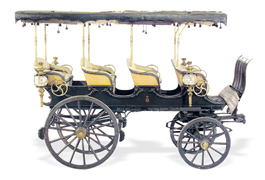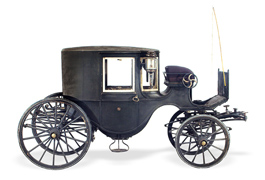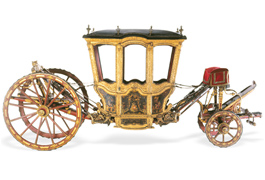
Promenade vehicle of Italian origin reaching its pinnacle in the 18th century. It was used by the Royal Family in their estates in Queluz, Mafra and Lisbon and was especially attractive to the young princes and princesses. Its body is open, except for at the front, which had a leather panel, used as a door, and has two seats. There is a seat for the groom at the rear end of the car. For the safety of the passengers, it was driven by an outrider. There are two wooden arcs extending downward from the wheel axles, which served as shock absorbers in the event that one of the wheels should come loose.





